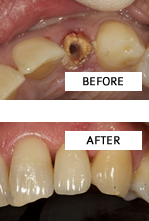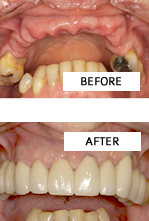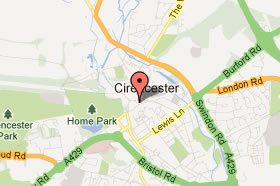Missing Teeth Solutions
Missing teeth can often be replaced by Implants which act like roots of teeth. After they have been fitted and have healed in place, Dentures, Bridges or Crowns may be attached to them. When Dentures are held in place by Implants they do not slip around. If Crowns or Bridges are fitted on Implants, they act like normal teeth.
Single tooth replacement

A single Dental Implant is designed to replace the missing root and act as a support for the Implant Crown on top.
Multiple teeth replacement

An “Implant-supported Bridge” can be placed on two or more Implants.

Why do we lose teeth?
There are lots of reasons why teeth either need to be removed or simply fall out. These can include:
- Tooth decay
- Advancing gum disease
- Accidents
- Inherited or congenital conditions
- Advanced wear and tear due to ageing
- Effect of serious infection (including failing root canal treatment)
Why replace missing teeth?
When a tooth is lost the jawbone beneath it begins to shrink and become brittle. This shrinkage is due to a lack of stimulation from the missing tooth – in a similar way to how muscle withers through lack of use. Teeth adjacent to the space created by the lost tooth will then tilt and drift leading to unevenness in your bite and the overall appearance of your smile. Over time this shrinkage can lead to a huge change in facial appearance and the face can collapse through this lack of support. These changes can not only affect your day-to-day ability to chew properly and therefore your diet and nutrition, but may leave people feeling unhappy and self-conscious about their mouth and smile.
What are my options for replacing missing teeth?
For people who have NO remaining teeth the alternatives are:
- Removable Dentures
- Implants which secure your Dentures in place
- Implants which support Crowns and Bridges
For people who have SOME of their own teeth the alternatives are:
- Crowns and Bridges supported by Implants and/or teeth
- Partial Dentures secured by Implants and/or teeth
- Partial Dentures supported by teeth
- Bridges supported by teeth
What are the strengths and weaknesses of my options?
Removable Dentures

Adhesive Bridges

Conventional or Porcelain Bonded Bridges

Dental Implants









